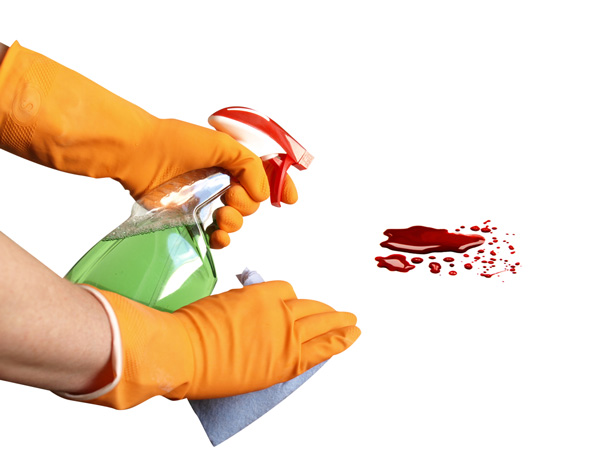Course: Bloodborne Course
Chapter 5 : Handling Exposure
It’s crucial that you clean up any blood or OPIM to reduce the chance of exposure.
To clean an infected area, you must:
- Put on the appropriate personal protective equipment
- Use absorbent towels to wipe up blood or blood-containing materials
- Remove any broken sharps with forceps/tongs/dust pan (do not use bare hands), and place in sharps waste container
- Spray disinfectant on contaminated area and let it sit for a few minutes
- Dry sprayed area with absorbent towels
- Dispose of cleaning materials and PPE in designated waste containers

OSHA defines appropriate disinfectants as:
- EPA-registered disinfectants and disinfectants that are labeled to be effective against HIV and HBV;
- diluted bleach solutions (one fourth cup of household bleach to a gallon of water);
- and high-level disinfectants cleared by the FDA
